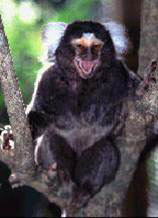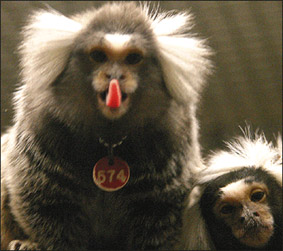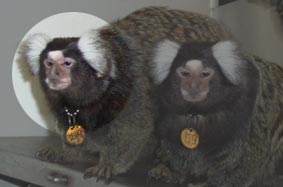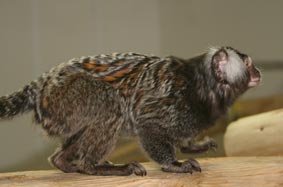In what circumstances do marmosets groom each other?

- A – During relaxed socialising
- B – Following a stressful event
- C – During an aggressive confrontation
- D – While hanging upside down
Comment: Social grooming is mainly a positive welfare indicator but it does depend on the context. Allogrooming is mainly performed in relaxed social situations but brief bouts of allogrooming may occur following a stressor.






